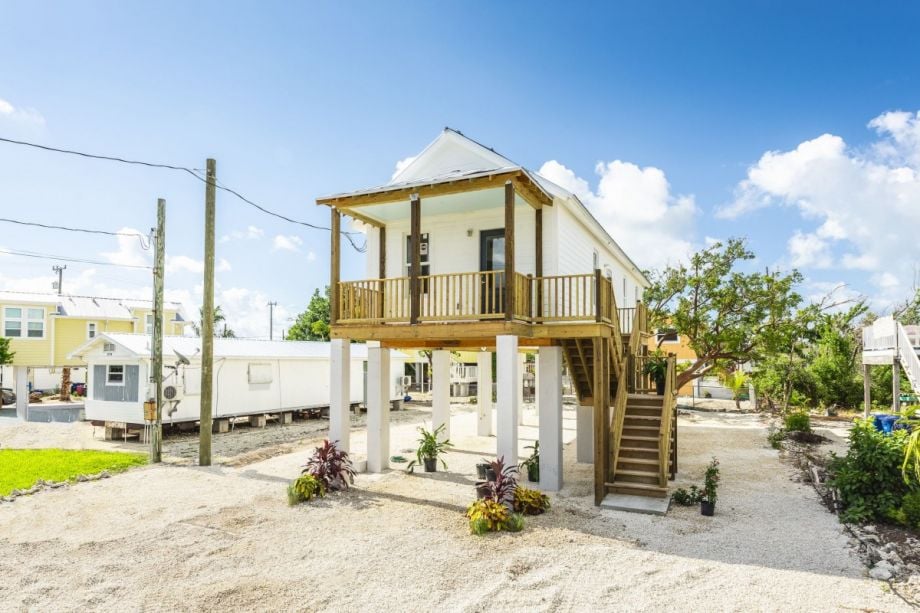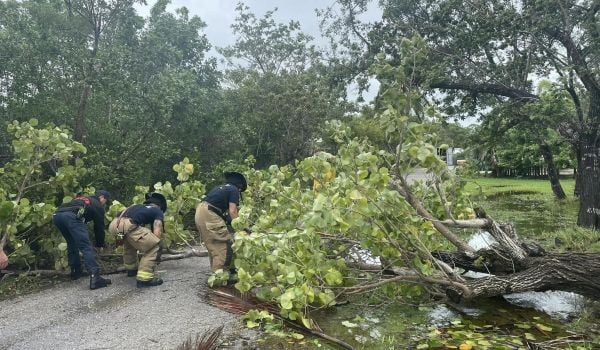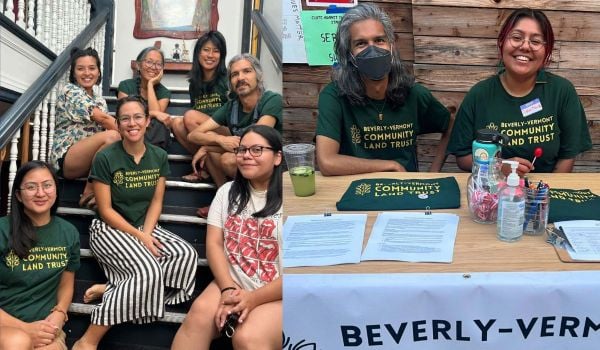Nearly 50 years after their arrival in the United States in 1969, we know community land trusts offer a sustainable path to affordable homeownership.
Community land trusts, estimated to have grown to around 300-450 CLTs nationwide, have proven a highly effective approach against the increasing commodification of housing and private market financing – but only when paired with robust stewardship approaches upheld by all stakeholders.
That message comes through loud and clear when we speak with homeowners. From disparities in land tax issued for improvements on community land trusts and critical gaps in homebuyer and homeowner education, homeowners residing on CLTs speak to the pains and gains of this powerful vehicle of affordable homeownership.
A quick primer: CLTs acquire and hold parcels of land that are scattered throughout a CLT’s service area, then convey long-term use of the lands to individual homeowners through a renewable ground lease, embedding provisions in the lease to ensure homes built on the land remain affordable and in decent repair for subsequent owners. The future resale price is restricted through an agreed-upon resale formula designed to serve income-qualified households, ensuring ongoing affordability. This model makes homeownership accessible to longtime renters, especially in communities facing the threat of displacement and gentrification.
I’m part of a group of nonprofit leaders and CLT practitioners who hosted a series of focus group discussions with 11 homeowners who currently own or have sold their homes on a nonprofit-led CLT. Our conversations with homeowners, whose names have been changed to protect their privacy, show their enthusiasm for an alternative ownership model — and reveal what support they need to continue owning their homes successfully.
The stability of owning your own home
In 2021, Jacob and his wife bought their first home in Frederick County, Maryland. Jacob, who works for a housing nonprofit in Maryland, bought his three-bedroom single-family home for $160,000, with a 4% interest rate and 30-year mortgage term.
Nearly two years after the purchase, he says he sees the benefit of investing in a lasting affordable home as a first-time homebuyer. “In renting, at the end of the day, nothing comes out of that,” he says. “Here, you pay below market, [and] someone [is] helping you get into your home and supporting you through that.”
The biggest benefits are affordability and flexibility, he says. “Affordability is so secure that even though I had a medical charge of $2,000, I am not worried about losing my home,” Jacob tells us. “I don’t have to worry about juggling bills. I have the maneuverability and flexibility to juggle multiple bills.”
Homeowner Lily bought a single-family unit on the Colorado Community Land Trust during the pandemic. “One of the things I am happy about is that I was not pushed out of my own community, because I was not able to afford it earlier,” she says.
The CLT model has also allowed Eva, a single parent in Northern Idaho, to stay in the neighborhood she grew up in. “For me it is about being in my community and [having] access to the city,” Eva says. “Most beneficial is the stability. I can cover my mortgage and put food on the table, clothes for my son and for extracurricular activities and the bonus is to be able to be close to my family and the neighborhood I grew up in.”
Again and again, homeowners told us about the impact of having financial security and stability in being a homeowner on a land trust, especially as long-term renting was pricing them out of their communities.
Enabling homeowners to save and build wealth over time
After 20 years of renting her home, Portland-based healthcare worker Danny was selected to be a homeowner of a two-bedroom condo unit on a CLT through the city’s preference policy. Under this policy, the city aims to address the harmful impacts of urban renewal by prioritizing housing applicants with generational ties to North and Northeast Portland.
As the first homeowner in her family, Danny valued the financial coaching she received to learn to finance her homeownership journey: “I was grateful to understand how to save money, how to pay off my small debt, to be able to pay off my bigger debt and then be able to save for my current finances.”
Brad, another first-time homeowner, had recently sold his home on a land trust after owning it for five years in Frederick County.
In 2016, Brad had bought a three-bedroom house in downtown Frederick for $150,000, with a monthly mortgage payment of $800. Within five years, Brad was able to walk away with an equity of $10,000, making it easier for him to purchase and build his own home in North Carolina.
As a renter who had been priced out the same neighborhood earlier, Brad had now been able to own an affordable home for five years and accumulate a starting investment for a new home. Without the lasting affordability granted by the CLT, an equivalent home would have cost him $2,000 per month to rent, without the opportunity to build savings over those five years.
A study by Grounded Solutions Network shows that median shared equity households that own CLT homes generally accumulate $14,000 in earned equity, compared to a median initial investment of $1,875. About six out of 10 homeowners use the earned equity to eventually purchase a traditional market rate home, researchers found.
Challenges in mortgage financing
In 2016, the Federal Housing Finance Agency’s Duty to Serve Underserved Markets Rule began requiring lenders like Fannie Mae to improve access to mortgage financing for those of modest means. Practitioners hailed Duty to Serve as a boon for homeowners on a CLT.
But homeowners and nonprofit lenders tell us that prospective buyers of CLT homes need support accessing mortgages from banks or credit unions.
Penny, a homeowner in Bucks County, recalls her experience in getting lenders to approve her loan: “I thought there would be more lenders [for me to choose from, but there were] only two lenders, [and one of those was not] going to do 100% of the loan.”
Jacob from Frederick County told us about the confusion and difficulty he faced accessing mortgages. “It did surprise me…We had to put $5,000 down to help with closing costs,” he says. At one point, he had to pay a $50 land fee as part of the mortgage. When he took it off the mortgage, Jacob says, the CLT raised the fee to $75: “So we went from paying $1,050 to $1,075. It was my first time dealing with a land trust, and a lot of stuff to process [that I realized] I didn’t fully process until I had a mortgage debacle.”
As stewards, nonprofit housing organizations often match potential homebuyers and lenders, keeping the lender informed and updated about affordability restrictions, potential homebuyer finances and affordable housing projects in their pipeline.
Homeowners like Penny and Jacob face disappointments due to lack of informed mortgage lenders at the start of the home buying process. Nonprofits can work to create awareness about CLTs, deed restrictions and other lasting affordability models among a wider pool of mortgage lenders.
Continuous homebuyer education, even after purchase
Lily, who is the president of her homeowner’s association in Colorado, says she has seen the need for continuous and consistent education for homeowners in her own community.
“We need training for renters going into becoming a homeowner,” she says. “It is important to communicate to homeowners about what their responsibilities are. We cannot help if there is immediate flooding; I don’t think it is being communicated to homeowners in their training.”
Longtime renters transitioning to first-time home buyers need support in learning about post-purchase homeowner responsibilities like running a functional homeowner association, communicating with property management companies, and scheduling regular payment methods for the multiple stakeholders involved in the CLT.
Lee, who owns a condo unit in Portland, says she would have benefited from such resources.
“I took a lot of notes during my homeowner education classes – how to connect with your HOA, payments, taxes,” she says. “However, after you get your house, similar support is not offered. We need the nonprofit to educate us on how to read the HOA bills, how to read mortgage company’s bills, and communicate with the property management company after we have purchased the house.”
Paying property taxes for land you don’t own
For Brad, the experience of owning a home on a land trust from 2016-2021 came with a few surprises. “I was paying property taxes on the land I didn’t own,” he says. “As I was going through the buying process, the CLT said they were working with the local government to make concessions on the land taxes. They thought they would be able to make headwind into it, but it never happened.”
When a hefty bill showed up at the end of the year, it left him surprised. “Once the property tax started weighing into it, it didn’t seem like an economical benefit as I originally thought,” Brad says. More information on what the selling process was like would have been helpful.
In recent years, multiple state legislators and CLT practitioners have been advocating to mitigate cost burdens that directly affect the homebuyer with restricted income. There has been considerable progress in the state of New York, where legislators proposed for new acquisition fund for community land trusts located in New York state; in California, where a bill prevents large scale corporations to buy bulk properties in foreclosure; and in Texas, where lawmakers passed a bill appraising properties based on affordability restrictions to reduce property taxes for homebuyers with lower income.
Need for strong nonprofit stewardship
Homeowner Eva says the support and stewardship she received from the CLT and its partnered nonprofit was vital in aiding her through the home-buying process. The housing organization she worked through “mentioned so many times, if you are going through hardships, reach out to us, and we have resources for you,” she recalls. “Being a first-time homeowner, you don’t have much knowledge about what to do when unexpected occurrences happen.”
A 2011 study by the Grounded Solutions Network’s Emily Thaden revealed that homes on a community land trust are around 7% less likely to undergo serious delinquency that results in foreclosure than mortgage loans in the conventional market. That makes CLTs a potent tool to address racial inequities in foreclosure; a recent analysis reveals that mortgage holders who are Black, Indigenous and people of color carry a risk of foreclosure two to three times higher than that of white homeowners.
Amid fears of a housing market crash, housing nonprofits can support homeowners by intervening early to communicate with lenders and establish alternative solutions, like providing financial counseling and accessing state subsidies, rescue emergency funding or other funding sources to prevent foreclosures..
Prudent stewardship delivered by the community land trust is an act of care, and eliminating historical disparities in housing calls for person-centered and trauma-informed care. Developing a care framework for long-term affordable homeownership will require concerted efforts to steer CLT practitioners, nonprofits, state entities and land trust residents to engage in the discourse of evolving stewardship practices continually — not a top-down nor bottom-up approach, but rather a collaborative approach, with residents’ lived experiences at the center.
In his new book “Community Matters,” Center for Community Land Trust Innovation president John Emmeus Davis, argues that the word “community” in a CLT stands for a set of interpersonal relationships that arises within a place of residence. The foundations of this community are built on maintaining solidarity networks, building constituency or political voice in guiding the CLT, operating on the values of mutuality and reciprocity, and consulting with neighbors on proposed projects.
Building on the concept of community as a set of interpersonal relationships in a place, it is critical to document and develop recommendations for nonprofit stewardship practices that will enable relations built on the values of solidarity, constituency, mutuality, reciprocity, and consultancy.
All views expressed in the article are the author’s own.
Aditi Nair is a researcher and urban strategist specializing in stakeholder collaboration, planning, and developing sustainable housing solutions centered on social justice. She has an academic background in architecture and a master's degree in urban planning from The New School. Aditi has worked as a strategist and designer for multiple nonprofits and government institutions in India and the U.S., including UN-Habitat. She currently works as a Senior Specialist in Community Practice and Strategy at Habitat for Humanity International and is part of the urbanism team at the University of Orange, NJ.
Aditi advocates for equitable housing solutions and uses participatory methodologies to co-create people-centered solutions embedded in inclusion, diversity and economic equity. Her research examines spatial justice, community wealth building and collective rights.
















